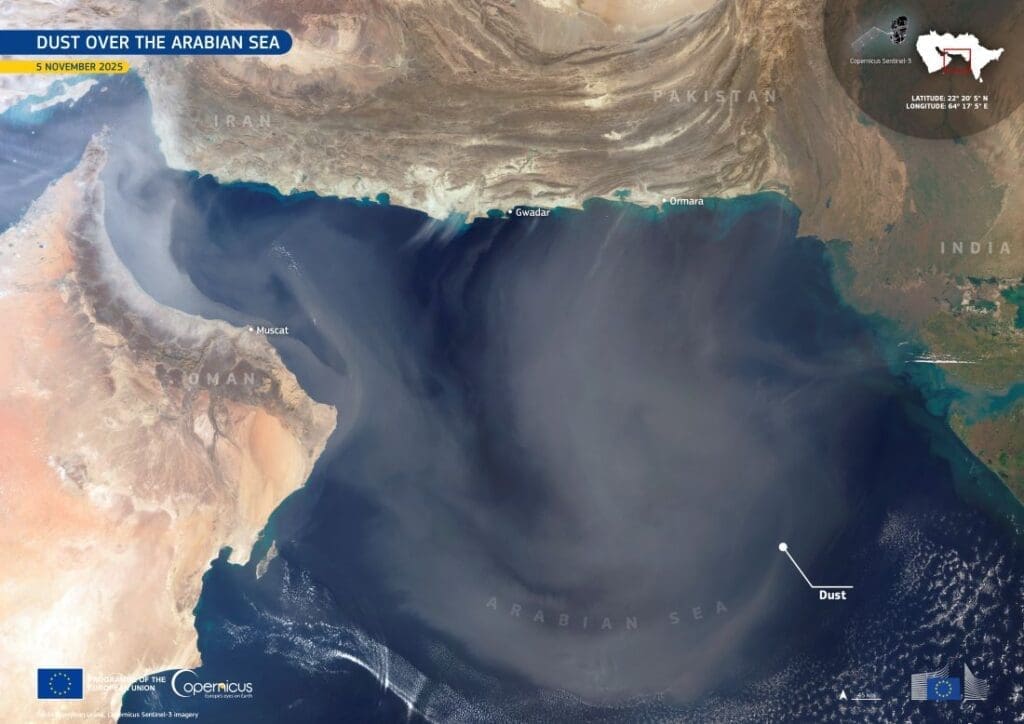Dust drifting over the Arabian Sea in early November 2025 reflects the seasonal interplay of dry terrain and persistent winds across southwestern Asia. Strong north-westerlies swept across Iran and southern Pakistan during this period, lifting fine mineral particles from arid basins and carrying them over open water. These winds often transport dust far from its source, shaping regional air quality and contributing to long-range atmospheric movement of sediment.
Such events are familiar across this part of the world, where extensive deserts and dry plains generate favourable conditions for the formation of large airborne plumes. Once aloft, the particles can spread widely, reaching coastlines and at times reducing visibility in major population centres. In early November, this pattern repeated as the plume expanded southward and eastward over the sea, influencing conditions in several countries bordering the basin.

In this Copernicus Sentinel-3 image acquired on 5 November 2025, the dust appears as a pale haze stretching across the deep blue waters of the Arabian Sea. The plume extends over parts of Pakistan, Iran, and Oman, and reports from Muscat indicated that the city experienced noticeable dust during the event.
The availability of free and open Copernicus data allows for continuous tracking of dust movement at high resolution, providing essential information for air-quality forecasting and environmental assessments. These observations help authorities anticipate when transported dust may affect coastal communities, supporting public-health preparedness and offering insight into how regional climate and geography influence the frequency and intensity of such events.
Featured image credit: European Union, Copernicus Sentinel-3 imagery




